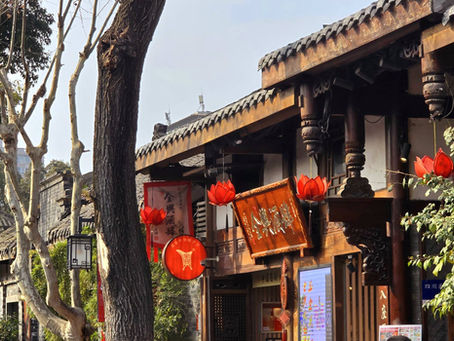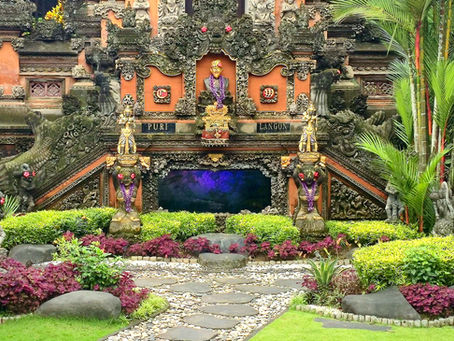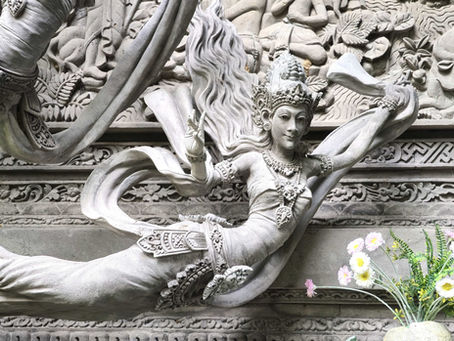top of page

GLOBAL SHANANIGANS

Search


Goa Lawah Bat Cave Temple
On Bali’s southeastern coast, Goa Lawah Bat Cave Temple stands out as a powerful spiritual site where myth and nature collide. With thousands of bats roosting above its shrines, this atmospheric temple offers a raw glimpse into the island’s ancient traditions.
Shannon


Cat Cat Village
Cat Cát Village lies in the misty mountains of northern Vietnam, known for its cascading waterfalls, terraced hillsides and narrow stone paths that wind through the valley. The landscape, shaped by water and cloud, gives the village a magical atmosphere that draws travellers seeking both beauty and stillness.
Shannon


Chengdu Night Cruise
Founded by the Kingdom of Shu in the 4th century, Chengdu and the Jinjiang River served as a crucial intersection to three trade corridors for the Silk Road. In 316AD it was established as the Capital under the Qin Dynasty and was not only a key centre for trade but became renowned for its music, poetry and cuisine.
Shannon


Kuanxiangzi Alley & The Blood Lantern Widow
Tucked into the vibrant heart of Chengdu, the capital of Sichuan Province, Kuanxiangzi Alley is a rare remnant of Qing Dynasty urban design, its origins reaching back over 300 years. Established in the late 17th century, the alley was constructed over an ancient military garrison and gradually developed into an elite residential area.
Shannon


Bao Lac
Bảo Lạc Town, near Vietnam’s northern border with China, hides a blood-soaked past beneath its calm surface. For centuries, this rugged land was home to fiercely independent Tày, Nùng, Hmong, and Dao tribes who lived and died resisting Vietnamese and Chinese domination. Imperial forces repeatedly tried to crush their autonomy, but the mountains ran red as rebellion flared again and again.
Shannon


Bedogol - The Gatekeepers
Across Bali, Bedogol refers to the guardian statues that flank the entrances of temples and family compounds, the silent watchers carved in stone. Positioned in pairs on either side of a gateway, they serve as spiritual protectors, anchoring the threshold between the ordinary world and sacred ground.
Shannon


Puri Langon Temple
Puri Langon is a privately owned royal compound located in central Ubud. It is the personal residence of Tjokorda Ngurah Suyadnya, better known as Cok Wah, a respected figure in the Ubud royal family. Though it remains a functioning private home, Puri Langon is open to the public free of charge, offering rare access to a lived-in royal space that continues to serve spiritual and cultural functions within the community.
Shannon


Hanoi Old Quarter
A living, breathing time capsule, Hà Nội Old Quarter is a tapestry woven from centuries of colonial exploitation, Confucian rituals, dynastic collapses and wartime destruction. Despite relentless modernisation and gentrification, the Old Quarter remains defiantly alive. It preserves not just Hà Nội’s heritage but the very essence of Vietnam’s ability to adapt and endure.
Shannon


Batara Kala - Devourer of Time and Light
Batara Kala, in Balinese mythology, is the monstrous deity of time, destruction and the underworld. He's a god born not from light but from the uncontrolled lust of the supreme god Shiva (Siwa). In one chilling version of his origin, Batara Kala is conceived during a moment of cosmic imbalance, when Shiva’s spilled seed, filled with uncontrollable rage and passion, falls to earth and takes form.
Shannon


Beyond the Mist - Exploring Sapa
Tucked high in the Hoàng Liên Son Mountains of northwestern Vietnam, Sapa’s history predates the modern tourism boom by centuries. Archaeological discoveries suggest that humans have inhabited this rugged region for thousands of years. Stone tools, ceramic fragments and burial items uncovered in the Muong Hoa Valley point to a Neolithic culture that once thrived along the riverbanks. These finds, some dating back 3000 years, are among the earliest signs of life in Vietnam’s m
Shannon


Bhoma - Bali's Protector and Judge
In the architectural language of Balinese temples, Bhoma statues are not merely decorative but play a protective and symbolic role. Bhoma is derived from the ancient Sanskrit word bhūma, meaning “Earth” and is considered a guardian spirit linked to fertility, the forest and subterranean realms. Usually mounted above temple gates or embedded within sacred water features, these fierce, leaf entwined figures serve as guardians of spiritual boundaries,
Shannon


Ganesh - The Remover of Obstacles
In the moss veiled temples of Bali, Ganesha is far more than a familiar Hindu icon, he is a living force who moves between light and shadow. Though his roots lie in Indian Hinduism, Bali’s Ganesha (also known as Batara Gana) has taken on new dimensions, shaped by animist spirits, local rituals and the Balinese understanding of cosmic balance.
Shannon


Taman Dedari - Dine Among the Divine
Born from the legend of Resi Markandeya’s vision of angelic dancers over the Ayung River, Taman Dedari blends myth and appetite in equal measure. Here, guests savour Balinese flavours in a riverside setting guarded by monumental stone Dedari, the celestial maidens of old.
Shannon


Taman Ujung Water Palace
In the heart of Batuan village stands one of Bali’s oldest and most spiritually charged temples: Pura Puseh Desa Batuan. Founded in 1020 AD, it’s recorded in Balinese historical texts that stretch back over a millennium. Its structure is not only physically resilient but symbolically rooted in something far older, believed to have been built atop a megalithic worship site once used for ancestral rites.
Shannon


Keramas Black Sand Surf Beach
Keramas Beach, located on Bali’s less developed eastern coastline in Gianyar, is known for its striking black volcanic sand and powerful surf breaks. Unlike the bustling beaches of Kuta or Seminyak, Keramas maintains a more secluded atmosphere, drawing a niche crowd of surfers rather than general tourists.
Shannon


Hiroshima Castle - Echoes of an Empire
Rising from the flatlands of western Japan, Hiroshima Castle was a powerful nerve centre built by Mōri Terumoto during an age of shifting allegiances and ruthless ambition. With its broad moat and imposing stone walls, the castle was less about isolation and more about control, a symbol of calculated authority in a time of near constant war.
Shannon


Meijiawu Tea Village - Tea of the Emperors
Tucked into the misty hills near Hangzhou’s famous West Lake, Meijiawu is more than just a tea village, it’s a living testament to China’s centuries old relationship with tea. The name "Meijiawu" translates to "The Village of the Mei Family," pointing to a 600-year lineage of hand cultivating tea that began with the Mei clan and continues to thrive today. Over time, this small village grew into a national symbol, with its identity and prosperity deeply intertwined with tea cu
Shannon


The Birth of Apsaras - Daughters of the Ocean of Milk
Apsaras, the celestial nymphs of Hindu and Buddhist mythology, are revered for their unparalleled beauty, graceful movements and mastery of dance and music. Adorned with golden skin, fragrant hair and flowing garments, they appear throughout ancient texts as divine attendants in the heavenly courts of gods like Indra, where they serve as entertainers and symbols of spiritual and aesthetic refinement.
Shannon


Bailong Elevator - In the Shadow of Dragons
Rising like a gleaming spine along the raw sandstone cliffs of Zhangjiajie National Forest Park in China’s Hunan Province, the Bailong Elevator, also known as the "Hundred Dragons Elevator" is both a marvel of modern engineering and a looming monolith that stirs ancient fears. Piercing 326 metres into the sky, it is the tallest outdoor elevator in the world.
Shannon


Hoàn Kiếm Sword Lake and the Turtle Tower
Nestled in Hanoi’s bustling Old Quarter, Hoàn Kiếm Lake offers a serene escape from the city's chaos. This natural freshwater lake, stretching 700 metres across 12 hectares, has been a cultural and historical anchor for centuries, its origins possibly predating Hanoi itself by over a thousand years.
Shannon
bottom of page